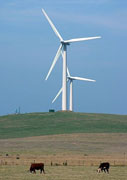Program on Science, Technology and Society at HarvardHarvard Kennedy School of Government | Harvard University |
||||||||
|
|

Methodological PointersAs an analytic concept, “sociotechnical imaginary” straddles the line between structure and agency: it combines some of the subjective and psychological dimensions of agency with the relative hardness of technological systems, policy styles, organizational behaviors, and political culture. The methods best suited to the study of sociotechnical imaginaries therefore are the interpretive research and analytic methods in STS that help illuminate the structure-agency relationship. Although these methods are not specific to the analysis of imaginaries, they can be used in ways that are especially attuned to this concept, e.g., to the ways in which imaginaries frame and represent futures, relate past and future time, enable or restrict action, and naturalize certain ways of thinking about possible worlds. This section provides pointers on how the qualitative methods most frequently used in STS research can be employed in distinctive ways to explore the evolution, uptake, and cultural dissemination of sociotechnical imaginaries. The strength of an argument about imaginaries often depends on creative juxtaposition of evidence from a variety of sources, using multiple methods. DISCOURSEDocuments and other verbal texts related to science, technology, and power—e.g., legislative hearings, policy reports, judicial opinions, legal briefs, political speeches, media reports, and the work of public intellectuals—provide some of the most accessible and ubiquitous resources for analyzing sociotechnical imaginaries. By their nature, official texts tend to favor the imaginations of elites, although more popular (if less accessible) texts, such as the “gray” literature generated by NGOs and social movements, also repays careful study. Analytic methods applicable to such materials go beyond formal techniques of discourse analysis to more interpretive means of identifying linguistic and symbolic elements that are crucial to the production and uptake of sociotechnical imaginaries. These elements include recurrent themes or tropes in references to national and cultural particularities, such as “American exceptionalism,” or in articulations of the public good, risk, and responsibility. IMAGES AND REPRESENTATIONVisual and other non-verbal forms of representation can provide significant evidence of structured imaginaries. Indeed visual texts may be more important than verbal ones as primary sources of insight into the imaginations of non-state actors such as corporations, non-governmental organizations, and popular movements—many of whom do not produce official documents, records, or histories. Genres include film, television programs, websites, and advertising campaigns. Such evidence can be especially useful in charting constructions of publics by those in power, and vice versa, in documenting how risks are framed, and in displaying (or selectively erasing) elements of imagined pasts, presents, and futures. ETHNOGRAPHYMany of the constitutive elements of sociotechnical imaginaries are tacit and uncodified, but they nevertheless possess great durability. Access to these can be gained through a cluster of techniques familiar to students of culture. They include open-ended interviews with key social actors and participation observation of their actions, practices, and lives. Such analysis often becomes more powerful when conducted at varied sites: for example, governmental actions to promote technologies, public protests against them, and consensus conferences to educate citizens about their risks and benefits. Such methods are especially well suited to excavating the performative, non-codified dimensions of collective self-identifications and ideologies; they also usefully relate discourse to practice and the promises of imaginaries to actual histories of state-sponsored technoscientific projects. CASES AND CONTROVERSIESCase and controversy studies offer a potentially rich entry point to sociotechnical imaginaries because they afford opportunities for documenting interactivity among diverse types of actors deploying varying strategies in struggles to imagine and control the future. Controversies are especially fruitful sources of information about the imaginaries of the less powerful, the less organized, or the less articulate members of a society. Case studies with a historical or a comparative dimension can provide evidence of longer-term commitments to particular sociotechnical imaginaries. UTOPIAS AND DYSTOPIASIn technologically advanced societies, the imagination of alternative futures—good or evil—has never been wholly controlled by the actions and discourses of official state actors and their opponents. Indeed, authors, artists, and film-makers have long imagined both utopian and dystopian trajectories for societies that have mastered nature but also grown dependent on science and technology. Sometimes artistic visions have proved powerful enough to work themselves into widely shared cultural imaginaries, as most famously in the case of Mary Shelley’s Frankenstein, which has become emblematic of technology out of control and continues to inspire new terms for new fears such as “Frankenfoods.” Similarly, films such as Godzilla helped define the postwar imaginaries of nuclear and biological catastrophe. Tracing the links between artistic imaginations and other forms of social life, such as protest movements, affords additional insights into sociotechnical imaginaries. COMPARISONDeep-seated, collective foundations of sociotechnical imaginaries that are durable not only across time but also within certain realms of culture and place are often naturalized, reified and taken for granted in the everyday workings of society. Such invisible (or invisibilised) elements can only be teased out more fully through the lens of comparison; that is, when one examines the commonalities and differences in the cultural resources and practices brought to bear on the production and stabilization of sociotechnical imaginaries in different settings. The interpretive comparative approach does not necessarily attempt to establish causal connections that can be generalized across cases. Rather, by attending to the construction of meanings, identities, discourses, epistemes and representations, it problematizes the primary units of comparison, as well as the categories of similarity and difference, on which much social science research is based. For instance, in exploring how science and technology are incorporated into national and international imaginations, STS comparative analysis aims to show how ideas of nationhood or globalism are imagined, or reimagined, and performed in processes of the development and reception of science and technology, rather than accepting “nation” or “globe” as a given category. |
|||||||



